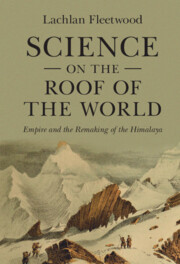Book contents
- Science on the Roof of the World
- Science in History
- Science on the Roof of the World
- Copyright page
- Dedication
- Contents
- Figures
- Acknowledgements
- Maps
- Introduction
- 1 Measuring Mountains
- 2 Unstable Instruments
- 3 Suffering Bodies
- 4 Frozen Relics
- 5 Higher Gardens
- 6 Vertical Limits
- Conclusion: A Vertical Globe
- Bibliography
- Index
3 - Suffering Bodies
Published online by Cambridge University Press: 28 April 2022
- Science on the Roof of the World
- Science in History
- Science on the Roof of the World
- Copyright page
- Dedication
- Contents
- Figures
- Acknowledgements
- Maps
- Introduction
- 1 Measuring Mountains
- 2 Unstable Instruments
- 3 Suffering Bodies
- 4 Frozen Relics
- 5 Higher Gardens
- 6 Vertical Limits
- Conclusion: A Vertical Globe
- Bibliography
- Index
Summary
Altitude sickness was little understood in the early nineteenth century, and the inconsistency of symptoms led some to doubt a constant cause. This led to tensions when European travellers were forced to compare their bodily performance against their South Asian companions. This chapter begins by contextualising altitude sickness in relation to lowland colonial anxieties around health, acclimatisation and air. Next is a discussion of indigenous understandings of altitude and a consideration of the ways the performances of bodies were recorded in travel narratives. Finally, the chapter considers experimental approaches around quantification. The chapter argues that there was a politics of comparison that developed around altitude sickness at multiple scales: in the way bodies, European and South Asian, experienced altitude sickness; in the way comparisons affected interactions within expedition parties; in the way these were represented in written accounts to avoid upsetting supposed superiority; and in the way these ultimately constituted high mountains as aberrant environments in relation to lowland norms.
Keywords
- Type
- Chapter
- Information
- Science on the Roof of the WorldEmpire and the Remaking of the Himalaya, pp. 96 - 129Publisher: Cambridge University PressPrint publication year: 2022

